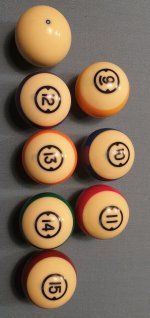Hitting harder. Yes. Lol... ok.
Let's say two baseball players are talking about two different baseball bats. Both bats weigh the same and are the same size. One bat, however, is made of thick plastic with a soft rubber coating around it, while the other is a standard aluminum bat.
One guy says, "I bet the aluminum bat drives the ball farther." The other guy says, "I bet there's no difference in how far each bat can drive the ball."
The 1st guy says, "Prove it."
So the second guy places a ball on a tee/stand and swings the aluminum bat with a normal swing, making perfect contact with ball. The ball goes 200ft. He then tees up another identical ball and gives it a smack with the plastic/rubber bat. The ball goes 200ft, and he turns and says, "See, I told you....there's no difference."
The 1st guy says, "Wow, that suprised me. I thought you'd have to swing the rubber bat a lot faster." The second guys says, "I did. That's the only way I could prove it."

